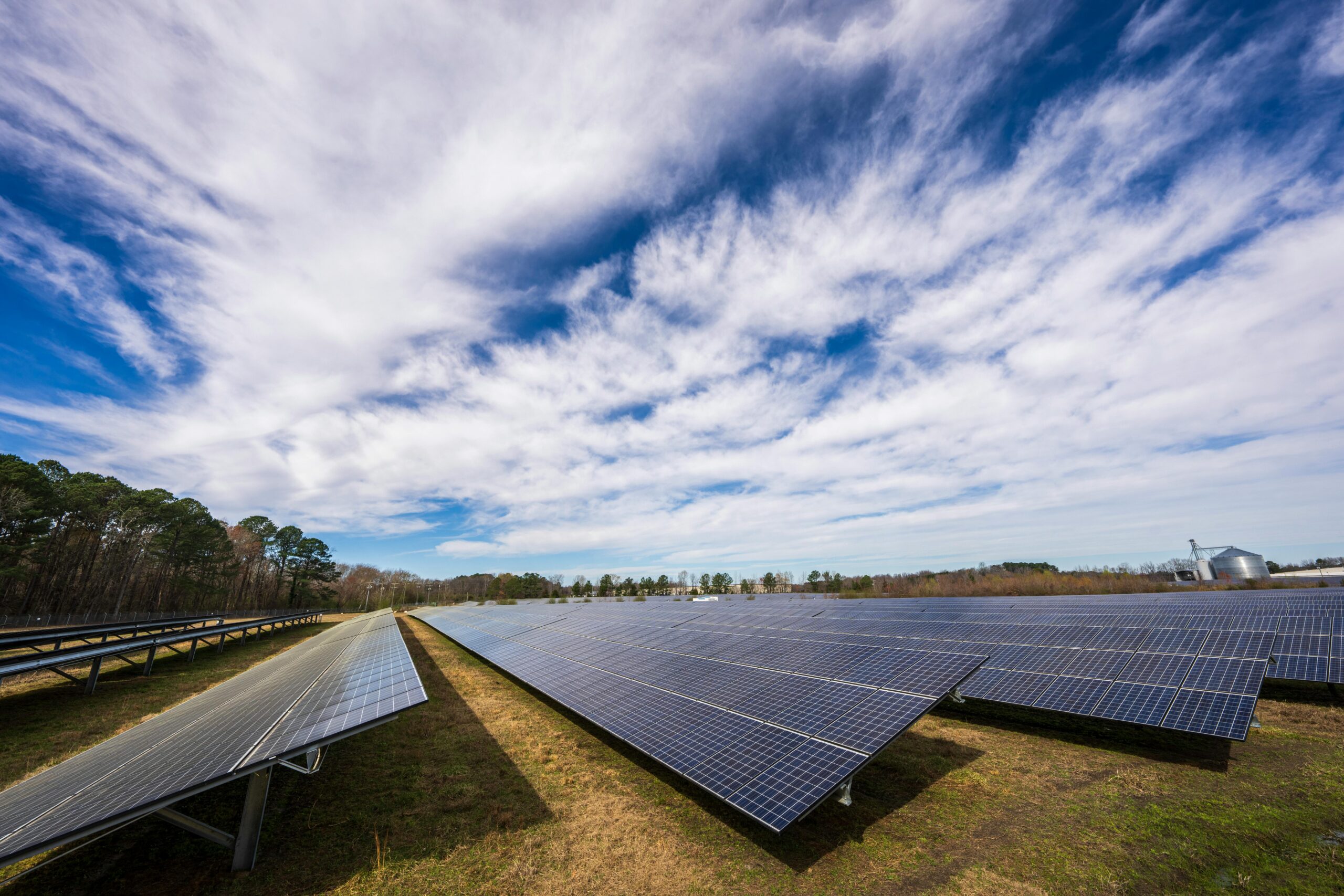Introduction
In the vast, windswept expanse of the East Anglian Fens, where the horizon stretches unbroken across fields of wheat and barley, a subtle transformation is underway. Amid the relentless march of industrial agriculture—a landscape that has claimed the vitality of countless bird species—gleaming arrays of solar panels rise like sentinels of a new era. These installations, designed to harness the sun’s boundless energy, are more than mere conduits of renewable power; they are emerging as unlikely bastions of ecological renewal. A pioneering study, published on February 12, 2025, in Bird Study, reveals a startling truth: when managed with intention, solar farms can reverse the fortunes of birds pushed to the brink by decades of habitat loss. This is no small revelation in a world grappling with the twin crises of climate change and biodiversity collapse.
For generations, the Fens have epitomized the trade-offs of modern land use. Drained centuries ago to fuel Britain’s agricultural engine, this region produces much of the nation’s food but at a steep cost. Farmland birds—once abundant in their chattering flocks—have dwindled as hedgerows vanished and pesticides silenced the hum of insect life. The UK’s State of Nature reports paint a bleak picture: over a third of farmland species have lost more than half their numbers since the 1970s. Yet here, amid the solar farms that now dot this tableau, a counter-narrative is taking shape. Researchers have uncovered that these sites, when thoughtfully designed, can triple bird abundance and bolster species diversity, offering a lifeline to creatures like the Corn Bunting and Yellowhammer—icons of a fading rural heritage.
This discovery arrives at a pivotal moment. As the UK races to meet net-zero targets, solar energy is expanding rapidly, with vast swathes of countryside earmarked for development. Too often, such projects are seen as a necessary sacrifice of nature for progress. But the East Anglia findings challenge that dichotomy, suggesting that renewable energy and conservation need not be adversaries. Instead, they can be allies in a shared mission to heal a fractured planet—one solar panel, and one bird, at a time.
The Players
The study’s architects are a formidable duo. Dr. Joshua Copping, a senior ecologist at the Royal Society for the Protection of Birds (RSPB), brings decades of expertise in avian conservation. The RSPB, a titan in UK wildlife protection with over a million members, has long championed habitat restoration. Partnering with Copping is Dr. Catherine Waite, an environmental scientist at the University of Cambridge, whose work bridges ecology and land-use policy. Their collaboration unites rigorous fieldwork—surveys across 23.2 kilometers of transects—with a vision for scalable solutions. Supported by the British Trust for Ornithology, which publishes Bird Study, their research reflects a confluence of academic precision and practical conservation goals, positioning them as leaders in reimagining renewable energy’s ecological footprint.
The Birds Affected
The beneficiaries of this experiment are a roster of farmland birds, many bearing the scars of agricultural intensification. The Corn Bunting (Emberiza calandra), with its distinctive jangling call, headlines the list; once widespread, it has plummeted by 90% in the UK since the 1970s, clinging to survival in pockets like the Fens. The Yellowhammer (Emberiza citrinella), its bright plumage a fading memory in many regions, and the Linnet (Linaria cannabina), a small finch reliant on seeds, are both red-listed as species of urgent concern. Summer migrants like the Whitethroat (Curruca communis) also feature, drawn to the scrub and tall grass of mixed-habitat sites. Even the Kestrel (Falco tinnunculus), a falcon that preys on small mammals thriving in these areas, signals a broader ecological uplift. These species, emblematic of farmland biodiversity, find refuge where solar farms defy the sterility of grazed or arable land.
Why This Is Important
The stakes could not be higher. In the UK, bird populations are in steep decline—over 70 species are now of conservation concern, according to the 2023 State of Nature report—and the drivers, from habitat loss to climate shifts, are intensifying. Solar farms, if managed conventionally, risk exacerbating this trend by claiming yet more countryside. Yet the East Anglia study offers a paradigm shift: renewable energy sites spanning thousands of hectares could double as conservation zones, amplifying efforts to stem biodiversity loss while powering a low-carbon future. Historical successes, like the recovery of waterfowl through wetland protection in the 20th century, prove intervention works; this research extends that promise to new frontiers. For policymakers, energy firms, and conservationists across the UK, it’s a call to action—proof that small changes, like banning grazing or planting wildflowers, can yield outsized rewards. In a nation desperate for solutions, these solar sanctuaries illuminate a path where technology and nature thrive together.
Key Data and Methodology
Key Data
The study quantifies how solar farm management impacts bird populations in the East Anglian Fens, comparing solar sites to adjacent arable farmland. Here’s the standout data:
- Bird Abundance:
- Mixed-habitat solar farms (those with hedgerows, uncut grass, wildflowers, and no grazing) averaged 31.5 birds per 4-hectare survey area (±6.4 standard error).
- Simple-habitat solar farms (grazed by sheep, no hedgerows) had 17 birds per 4 hectares (±4.9 SE).
- Arable farmland recorded just 11.9 birds per 4 hectares (±2.6 SE).
- This translates to mixed-habitat sites hosting nearly three times the bird abundance of arable land.
- Species Richness:
- Mixed-habitat solar farms supported 13.5 species per 4 hectares (±1.1 SE).
- Simple-habitat solar farms and arable land were nearly identical, with 5.3 (±0.6 SE) and 5.5 (±0.6 SE) species, respectively.
- Mixed-habitat sites thus showed over twice the species diversity of their counterparts.
- Threatened Species:
- The study recorded 27 species, with 11 on the UK’s Birds of Conservation Concern Red or Amber lists (e.g., Corn Bunting, Yellowhammer, Linnet).
- Mixed-habitat sites had significantly higher abundances of these priority species—e.g., Corn Buntings were almost exclusively found in mixed-habitat areas, reflecting their need for tall grass and seeds.
- Statistical Insights:
- Generalised Linear Mixed Models (GLMMs) confirmed that management type drove these differences (p < 0.05), with habitat complexity (presence of hedgerows, scrub, and diverse vegetation) as the key factor boosting both abundance and richness.
How It Was Conducted
The research was meticulous, designed to isolate the effects of solar farm management on breeding birds during spring 2023. Here’s how they did it:
- Study Area:
- Six utility-scale solar farms were selected from the UK Government’s Renewable Energy Planning Database, all within the Fens (from Cambridge to Peterborough and Lakenheath). This arable-dominated region is ideal for testing farmland bird responses due to its intensive agricultural baseline.
- Survey Design:
- Researchers adapted the British Trust for Ornithology’s Breeding Bird Survey (BBS) method.
- They established 23.2 km of transects: 13 in mixed-habitat solar farms (ungrazed, with hedgerows and diverse vegetation), 10 in simple-habitat solar farms (grazed, minimal vegetation), and 15.2 km in nearby arable fields as controls.
- Each transect covered a 4-hectare area (200 m x 200 m), with birds recorded within 100 m of the transect line.
- Data Collection:
- Two visits per transect occurred between April and June 2023, during peak breeding season, from dawn to 11 a.m., under good weather conditions (no heavy rain or wind).
- Observers noted all birds seen or heard—breeding, foraging, or perching—excluding flyovers unless landing. This yielded 624 individual bird records across 27 species.
- Analysis:
- Bird abundance and species richness were modeled using GLMMs with a Poisson distribution, accounting for variables like site, visit number, and landscape context (e.g., hedgerow length, arable cover within 1 km).
- Management type (mixed vs. simple vs. arable) was the primary predictor, with statistical significance tested against a null model.
- Site Management:
- Mixed-habitat sites featured no sheep grazing, uncut grass, and hedgerows, fostering wildflowers and scrub. Simple-habitat sites were grazed, lacked hedgerows, and had uniform short grass. Arable controls were typical Fens farmland—ploughed, pesticide-treated fields.
Results
The findings from the East Anglian Fens are unequivocal: how solar farms are managed profoundly shapes their value to birds. Across 23.2 kilometers of transects surveyed in spring 2023, researchers found that solar farms with mixed habitats—featuring uncut grass, wildflowers, hedgerows, and no grazing—far outstripped both their grazed counterparts and surrounding arable land in supporting avian life. These sites averaged 31.5 birds per 4-hectare survey area, nearly three times the 11.9 birds recorded on conventional farmland. Grazed, simple-habitat solar farms, by contrast, hosted a modest 17 birds per 4 hectares, barely surpassing the agricultural baseline.
Species diversity followed a similar pattern. Mixed-habitat solar farms supported 13.5 species per 4 hectares—more than double the 5.5 species on arable land and 5.3 in simple-habitat sites. This richness reflects a broader ecological uplift, with 27 species recorded overall, including 11 on the UK’s Red or Amber conservation lists. Threatened farmland birds like the Corn Bunting, Yellowhammer, and Linnet thrived in mixed-habitat areas, with Corn Buntings notably scarce elsewhere, underscoring their reliance on tall grass and seed-rich environments. Even predators such as the Kestrel appeared more frequently, hinting at a healthier food web bolstered by small mammals and insects in these diverse habitats.
Statistical analysis reinforced these trends. Using Generalised Linear Mixed Models, the researchers confirmed that habitat complexity—driven by the presence of hedgerows and ungrazed vegetation—was the decisive factor (p < 0.05), not merely the presence of solar panels. Grazed sites, lacking such features, offered little refuge. These results, drawn from two rigorous survey rounds across six solar farms, reveal a clear hierarchy: intentional design transforms solar installations into biodiversity hotspots, while conventional management leaves them ecologically inert.
Acknowledgment to the Scientists
The breakthroughs detailed in this study owe much to the dedication of its lead researchers: Dr. Joshua Copping and Tom Fincha of the Royal Society for the Protection of Birds (RSPB), Dr. Catherine Waite of the University of Cambridge, and Rob Shotton of the University of Worcester and many others. Their meticulous fieldwork and innovative approach—bridging ecology, ornithology, and land-use science—have illuminated a path toward harmonizing renewable energy with conservation. Supported by the British Trust for Ornithology, their efforts exemplify the power of collaborative science to address pressing environmental challenges, offering a model that could resonate far beyond the Fens.
Source Details
- Title: Solar Farm Management Influences Breeding Bird Responses in an Arable-Dominated Landscape
- Authors: Joshua Copping (RSPB), Tom Fincha (RSPB), Catherine Waite (University of Cambridge), Rob Shotton (University of Worcester)
- Journal: Bird Study (published by the British Trust for Ornithology)
- Publication Date: February 12, 2025
- DOI: 10.1080/00063657.2025.2450392
- URL: https://www.tandfonline.com/doi/full/10.1080/00063657.2025.2450392

